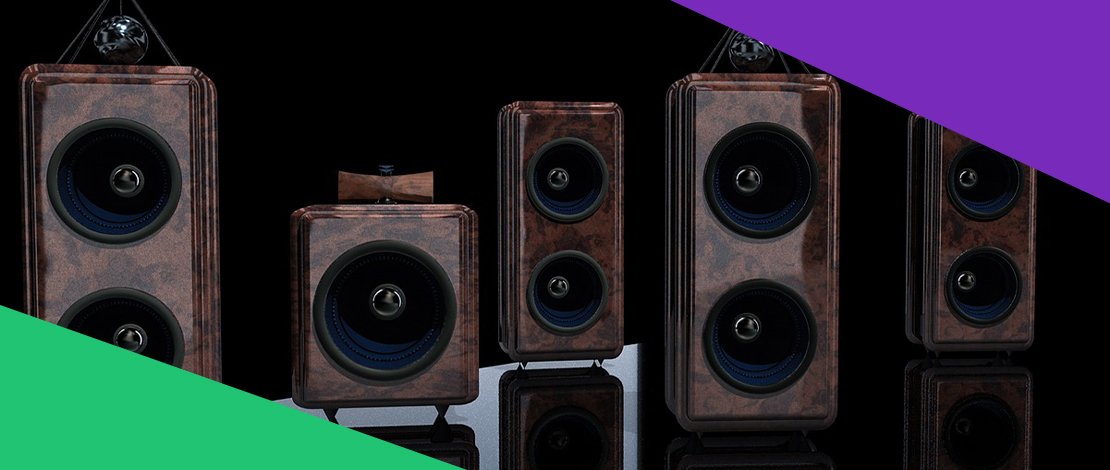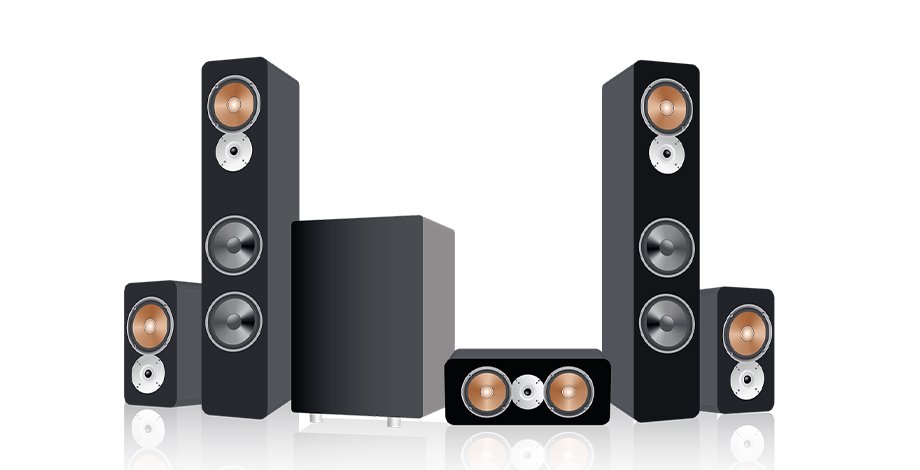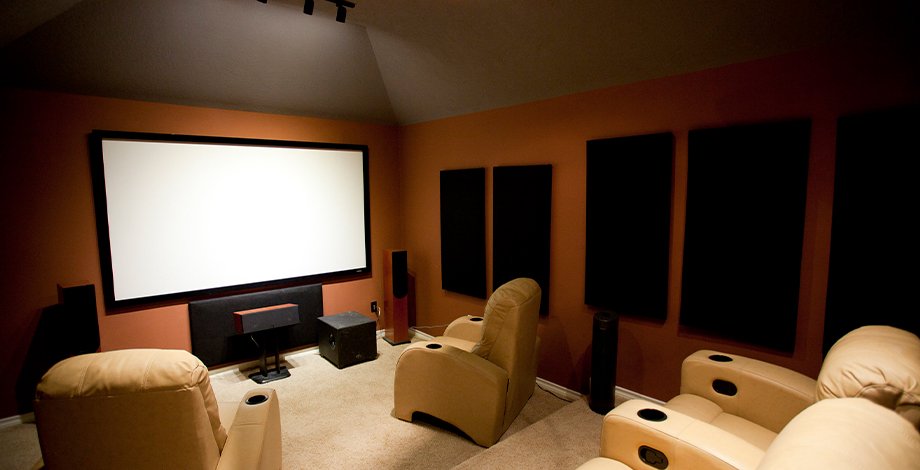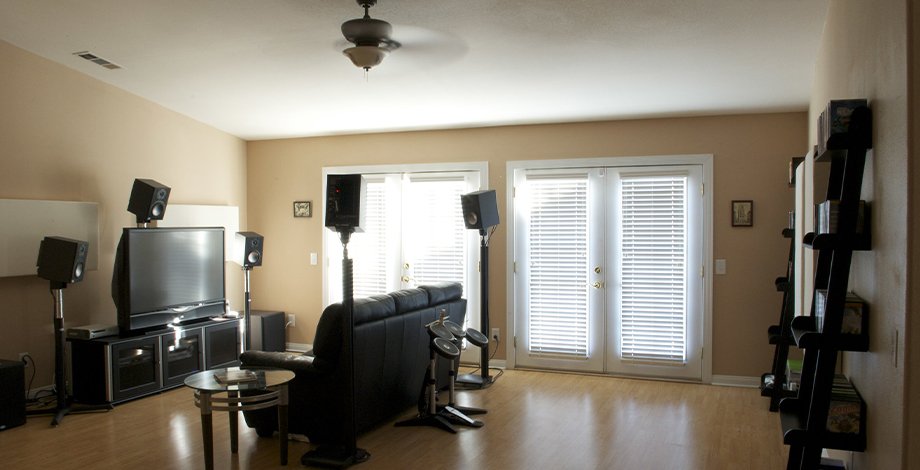5.1 vs 7.1 Surround Sound Explained

Surround sound is one of the best ways to experience listening to music, gaming, watching movies, and similar forms of entertainment. Most people who experience surround sound for the first time in their lives think it never gets better than this. However, the first surround sound system was invented in 1930, and we’ve definitely come far from then, resulting in much more enjoyable and efficient surround sound systems.
Today, we will be looking at two of the most popular surround sound systems that will help you with buying the best one, no matter if you’re looking for the best surround sound home theatre system, the gaming speakers, or anything in between.
Without further ado, here is all you need to know about the two most popular types of this technology – 5.1 vs 7.1 surround sound!
Difference In Setup
When it comes to a few of the main differences between these two types of surround sound, it’s not in the quality of speakers, frequency range, or anything similar. The main difference here lies in the number of speakers and speaker placement. Although, both of them feature contrasting formats and non-identical supporting devices.
5.1 is the older version of surround sound. It was introduced alongside digital sound in 1990. This doesn’t mean that it is worse than 7.1, as each 5.1 system that you buy doesn’t come from 1990, it was just invented then.
5.1 System Setup

As the name suggests, the 5.1 surround sound system features a total of 6 speakers (5+1). Five of them are the main speakers that produce that surround sound feel, and the last one is the subwoofer, allowing you to both hear and feel the lower frequencies, adding to a much livelier and immersive effect.
Here is the layout of the 5.1 surround sound system:
- Center Channel Speaker (1): Probably the most important one of the bunch. Place it, as the name suggests, in the center of your setup.
- Left and Right Main Speakers (2): Both of these speakers are positioned in front of you, next to your TV, PC, etc. Turn them at a 30-degree angle for maximum effect.
- Left and Right Surround Sound Speakers (2): These two speakers will be creating depth in your sound experience. Place them at each side, a little behind where you are sitting, and position them at around a 110-degree angle from the central speaker.
- Subwoofer (1): Last but not least, the subwoofer should be placed between the left and right main speakers, on the left side of the area. Ideally, closer to the left speaker but not right next to it.
7.1 System Setup

Exactly the same principles are applied with this type of surround sound system. However, as we mentioned, the one main difference is the number of speakers. There are two extra speakers with this model, adding up to a total of 8 speakers (7+1).
Here is how to set up each for maximum enjoyment:
- Center Channel Speaker (1): The location for this speaker is the same as the 5.1 setup.
- Left and Right Main Speakers (2): Same as the 5.1 setup. However, you can tilt them between 22 and 30 degrees.
- Left and Right Surround Sound Speakers (2): These speaker positions are different here. You have to position them straight on the left and right sides from where you are sitting. Ideally turned at a 90-degree angle facing towards you.
- Subwoofer (1): The subwoofer is the same as the 5.1 setup as well.
- Rear/Back Speakers (2): As the name suggests, these two speakers go behind you. Locate them behind from where you are sitting on each side of the walls, tilted at a 135 to 150-degree angle facing towards you.
5.1 Surround Sound vs 7.1 Audio Formats
The audio formats of sound have one main feature to represent – how realistic the audio will appear to you. The more compressed the sound the more realistic it will be, making you feel like you are right there in the middle of all the action. Unfortunately, when it comes to 7.1 vs 5.1 surround sound the formats are rarely the same.
The audio formats that make 5.1 surround sound possible are either DTS (Digital Theater Systems) or Dolby Digital. DTS is more popular and common than Dolby Digital but it uses less compression, removing a bit from a more realistic effect. These are great formats that even apply to many of the budget gaming headsets out there.
In 7.1 surround sound, the most common audio formats include DTS-HD Master Audio and Dolby True-HD. Each of these formats is superb. Ideally, if you get a decent surround sound system in combination with either of these formats, you are going to get an extremely immersive sound.
Ideal Environment for 5.1vs 7.1 Surround Sound

Now that you know how each system functions, the number of speakers they include, the best formats for each, let’s consider which home environment is best for each individual system and how to make sure everything goes right while installing the speakers.
5.1 Room Size
The fact that there are fewer speakers with this system might give you an indication that it should be placed in a smaller or medium-sized room. You don’t want to go too small, as you will experience sound bouncing back and becoming muffled and harder to hear clearly. The surround sound 2.1 systems are great for small rooms, but the 5.1 is great for medium-sized ones. Ideally, you want to place the speakers around 56 inches away from where you sit.
Rooms measuring around 350 square feet (32.5 square meters) will be perfect for 5.1 surround sound systems!
7.1 Room Size
Unlike the 5.1 systems which are designed for more general use and can be applied to gaming setups, in living rooms, and similar, the 7.1 system is intended for much bigger rooms. These systems are also more expensive, louder, more durable, and can provide an extremely immersive experience.
Rooms that are bigger than 350 square feet will be great for 7.1 surround sound systems. The more expensive systems can easily cover areas of a maximum of 2000 cubic feet.